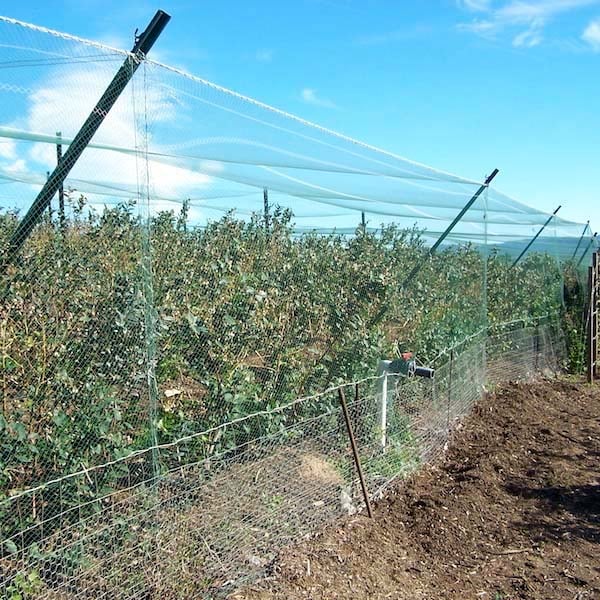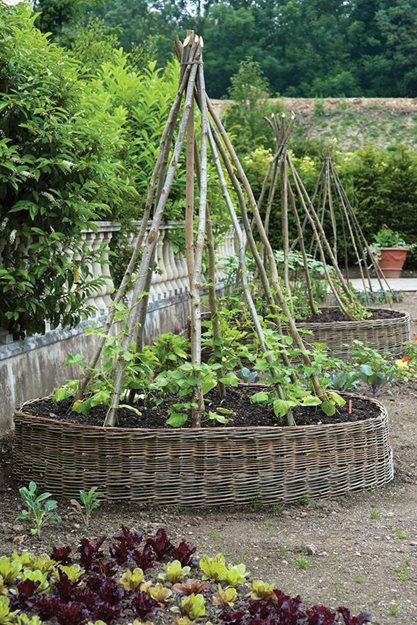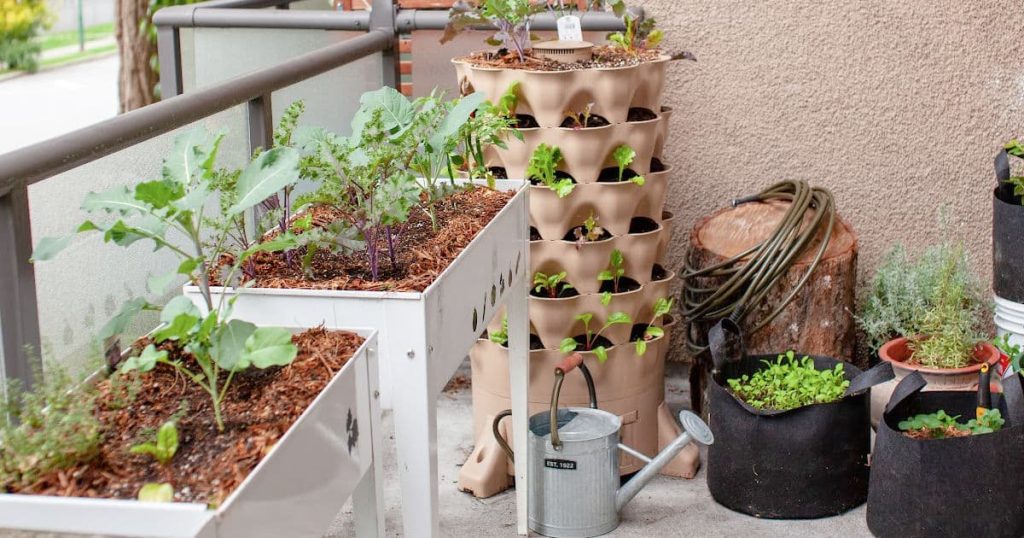Are you tired of dealing with pesky pests, unpredictable weather, and other challenges that come with traditional gardening? Look no further than a fully enclosed vegetable garden. This innovative gardening technique allows you to grow your own fresh produce in a controlled environment, free from the limitations and frustrations of traditional gardening methods. In this article, we will explore the benefits, uses, and tips for creating and maintaining a fully enclosed vegetable garden.
Benefits of a Fully Enclosed Vegetable Garden

A fully enclosed vegetable garden offers numerous benefits for gardeners of all levels. Here are some of the top advantages of this innovative gardening method:
Protection from Pests and Wildlife
One of the biggest challenges faced by traditional gardeners is keeping pests and wildlife away from their precious plants. From insects to rabbits, there are countless critters that can cause damage to your garden. A fully enclosed vegetable garden provides a physical barrier that prevents these pests from accessing your plants. This means less time spent on pest control and more time enjoying your thriving garden.
Controlled Environment for Optimal Growth
Another major advantage of a fully enclosed vegetable garden is the ability to control the growing environment. With traditional gardening, you are at the mercy of Mother Nature and her unpredictable changes in weather. However, with a fully enclosed vegetable garden, you can regulate factors such as temperature, humidity, and sunlight to create the perfect conditions for your plants to thrive.
Year-Round Gardening
With a fully enclosed vegetable garden, you can say goodbye to seasonal limitations on your gardening. By controlling the environment, you can extend your gardening season and grow your favorite fruits and vegetables year-round. This not only allows for a constant supply of fresh produce, but it also gives you the opportunity to experiment with different crops that may not have been possible in traditional outdoor gardening.
Increased Yield and Quality of Produce
The controlled environment of a fully enclosed vegetable garden also leads to higher yields and better quality produce. Without the threat of pests and with optimal growing conditions, your plants can flourish and produce more and better-tasting fruits and vegetables. This means you can enjoy a bountiful harvest of your favorite produce all year long.
Low Maintenance and Water Conservation
Traditional gardening often requires a significant amount of time and effort in terms of maintenance, including weeding, watering, and pest control. With a fully enclosed vegetable garden, these tasks are significantly reduced, saving you time and energy. Additionally, the controlled environment allows for efficient water usage, making it a more environmentally friendly option compared to traditional gardening methods.
How to Create a Fully Enclosed Vegetable Garden
Creating a fully enclosed vegetable garden may seem like a daunting task, but it is actually a straightforward and rewarding process. Here are the basic steps to get you started:
Step 1: Choose the Location
The first step in creating a fully enclosed vegetable garden is choosing the right location. Look for a spot that receives ample sunlight and is protected from strong winds. It should also be easily accessible for watering and maintenance.
Step 2: Build or Purchase a Greenhouse or Hoop House
A greenhouse or hoop house is an essential component of a fully enclosed vegetable garden. You can choose to build one yourself using materials such as PVC pipes and plastic sheeting, or you can purchase a pre-made structure. Make sure the greenhouse is large enough to accommodate your desired number of plants and has proper ventilation to regulate temperature and humidity.
Step 3: Prepare the Soil
The key to a successful vegetable garden is healthy soil. Before planting, prepare the soil by removing any weeds and adding organic matter such as compost or aged manure. This will provide the necessary nutrients for your plants to thrive.
Step 4: Choose Your Plants
One of the best things about a fully enclosed vegetable garden is the ability to grow a wide variety of plants. Consider your climate and the conditions inside the greenhouse when choosing your plants. Some popular options include tomatoes, peppers, cucumbers, and leafy greens.
Step 5: Monitor and Maintain
Regular monitoring and maintenance are essential for the success of your fully enclosed vegetable garden. This includes watering, fertilizing, and pest control. It is also important to keep an eye on temperature and humidity levels to ensure optimal growing conditions.
Examples of Fully Enclosed Vegetable Gardens

Here are some examples of how people have utilized fully enclosed vegetable gardens:
- A small-scale urban garden using a DIY hoop house on a balcony or rooftop
- A large-scale commercial operation utilizing a purpose-built greenhouse
- A community garden project with multiple fully enclosed vegetable gardens for different crops
- A backyard garden with a custom-built greenhouse for year-round gardening
These are just a few examples, but the possibilities for fully enclosed vegetable gardens are endless and can be tailored to fit any space or budget.
Comparing Fully Enclosed Vegetable Gardens to Other Gardening Methods

When it comes to growing your own fresh produce, there are many options available. Here are some comparisons between a fully enclosed vegetable garden and traditional outdoor gardening methods:
| Fully Enclosed Vegetable Garden | Traditional Outdoor Gardening | |
|---|---|---|
| Protection from pests | Yes | No |
| Control over growing environment | Yes | No |
| Year-round gardening | Yes | Seasonal |
| Increased yield and quality of produce | Yes | Dependent on weather |
| Low maintenance | Yes | No |
| Water conservation | Yes | Depends on watering habits |
As you can see, a fully enclosed vegetable garden offers many advantages over traditional outdoor gardening methods, making it an attractive option for those looking to grow their own fresh produce.
Tips for Maintaining a Fully Enclosed Vegetable Garden

Maintaining a fully enclosed vegetable garden requires some effort, but these tips can help make the process easier and more successful:
- Regularly monitor temperature and humidity levels and make adjustments as needed.
- Keep the greenhouse well-ventilated to prevent overheating.
- Use organic methods for pest control to avoid harmful chemicals.
- Rotate crops every season to maintain soil health.
- Regularly clean and disinfect tools and equipment to prevent the spread of diseases.
By following these tips, you can ensure a thriving and productive fully enclosed vegetable garden.
FAQs about Fully Enclosed Vegetable Gardens
What vegetables grow best in a fully enclosed vegetable garden?
A wide variety of vegetables can thrive in a fully enclosed vegetable garden, including tomatoes, peppers, cucumbers, leafy greens, herbs, and more. The key is to choose plants that are suitable for your climate and the conditions inside the greenhouse.
Is it expensive to create a fully enclosed vegetable garden?
The cost of creating a fully enclosed vegetable garden can vary greatly depending on the size and materials used. However, there are many affordable options for those on a budget, such as DIY hoop houses or secondhand greenhouses.
Can I use a fully enclosed vegetable garden in any climate?
Yes, a fully enclosed vegetable garden can be used in any climate. By controlling the environment, you can create optimal growing conditions for your plants regardless of your location.
How much maintenance does a fully enclosed vegetable garden require?
Compared to traditional outdoor gardening, a fully enclosed vegetable garden requires less maintenance. However, regular monitoring and upkeep are still necessary for the best results.
Are there any downsides to a fully enclosed vegetable garden?
The only potential downside to a fully enclosed vegetable garden is the initial investment of time and money in creating the structure. However, the long-term benefits far outweigh this small inconvenience.
Conclusion: Unlock the Full Potential of Your Vegetable Garden with an Enclosed Structure
A fully enclosed vegetable garden offers numerous benefits, from protection against pests and wildlife to year-round gardening and increased yields and quality of produce. By following the steps outlined in this article and implementing our tips, you can create your own thriving fully enclosed vegetable garden. Say goodbye to the limitations and frustrations of traditional gardening, and hello to a bountiful supply of fresh produce at your fingertips. Start planning your fully enclosed vegetable garden today and reap the rewards for years to come.

